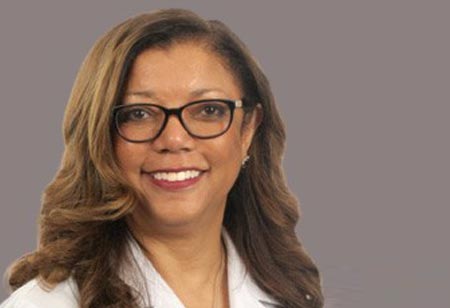Thank you for Subscribing to Healthcare Business Review Weekly Brief

Culinary Medicine for a Healthier Lifestyle
Healthcare Business Review
Culinary medicine is a relatively new evidencebased field that blends the art of food and cooking with the science of medicine. It focuses on using food to live healthier lives and fight chronic diseases like diabetes by making health-promoting foods more palatable, affordable, easy to prepare and accessible.
The Culinary Medicine Program at the University of Arkansas for Medical Sciences (UAMS) includes a robust curriculum purchased from The Goldring Center for Culinary Medicine at Tulane University, which was founded in 2012 as the first teaching kitchen operated within a medical school. The curriculum includes more than 32 components focusing on the basics of culinary medicine and numerous diseases that better nutrition could prevent or manage.
The program is designed to provide 24 hours of nutrition education in an eight-week course— with the didactic portion delivered online to two cohorts each semester.
We start with lessons on safety and sanitation, weight management and portion control before progressing to instruction on fats, food allergies and intolerance, proteins and amino acids, vegetarian diets and eating disorders, sodium, potassium and hypertension, simple versus complex carbohydrates and the significance to diabetes control and prevention, and the geriatric diet for a fast growing segment of our population.
Last October, we opened the UAMS teaching kitchen, which serves as a classroom for students and residents and is also available for limited use for employee and community courses.
It includes 10 cooking stations, each with an induction burner; a large prep area; lots of storage; ovens in the back; and a demonstration table that we can take out into the community or use when inviting the community in. We can accommodate up to 20 people in the kitchen.
Our program follows the Mediterranean Diet, which is equal to a medical prescription. The program helps people transition to healthier food choices by moving to more of a plant-based diet with reduced servings of meat, processed foods and sweets. Not only do we stress the health benefits of this diet, we also teach our students how to prepare meals using these principles.
At the end of each cooking session, we sit down and thoroughly enjoy the fruits of our labor, focusing on the food’s texture and aroma, and just being in the present while enjoying the meals that we have prepared.
In line with UAMS’ goal of improving the health of all Arkansans, our motto in the culinary medicine program is “We AR cooking for a better state of health.” And we really take that motto to heart. Our mission is to educate our campus and our communities across the state so they understand the importance of healthy food choices as they relate to chronic disease prevention and chronic disease management.
We are very intentional in teaching our students and our residents to understand and apply nutritional principles ina practical way in their own lifestyles, which we hope will help them better educate their patients. We hope culinary medicine becomes the first tool clinicians reach for—both for themselves and their patients.
With our students’ increasing focus on primary care residencies, particularly in areas where they will interact with the older population, one of the biggest challenges they will face as practitioners is helping people change longstanding behaviors that are risky to their health. Consequently, our culinary medicine program includes instruction on motivation interviewing, which enhances a patient’s motivation to change by listening with empathy and empowering the patient— basically, meeting them“where they are” and moving them toward healthier lifestyle choices.
Statistics show that only 38 percent of primary care physicians across the country discuss nutrition with their patients, which really underscores the lack of knowledge and comfort that doctors have in talking about nutrition with patients.
Our program helps people adopt healthier food choices by transitioning to a plantbased diet with reduced servings of meat, processed foods, and sweets. We also teach our students how to prepare meals using these principles
When our students come into the Culinary Medicine class, they also lack the necessary knowledge to hold these discussions with patients. However, it has been amazing to watch how comfortable they are with discussing food after the eight-week course. Culinary Medicine education makes a difference.
While the National Academy of Science recommends 25 hours of nutrition education, medical students generally fall short of it. The average medical student receives 19.6 contact hours of nutrition instruction during their medical school careers, and only 27 percent of medical schools meet the minimum 25 required hours set by the academy.
With the obesity epidemic in the United States, it is incumbent upon us as healthcare providers to stymie that increasing trend because we also know that the incidence of diabetes and other diseases associated with obesityparallels that incline.
In fact, obesity is associated with over 60 comorbidities.
The projection is that by 2030, 39 states will have an obesity rate of over 50 percent, with southeast states (including Arkansas) leading the pack. If we don’t do anything to stymie this trend, we will be spending extraordinary health care dollars on treating the complications of obesity.
I really believe that we can have a significant impact on disease prevention and a reduction in premature death by educating our patients on nutrition and healthier eating habits.









